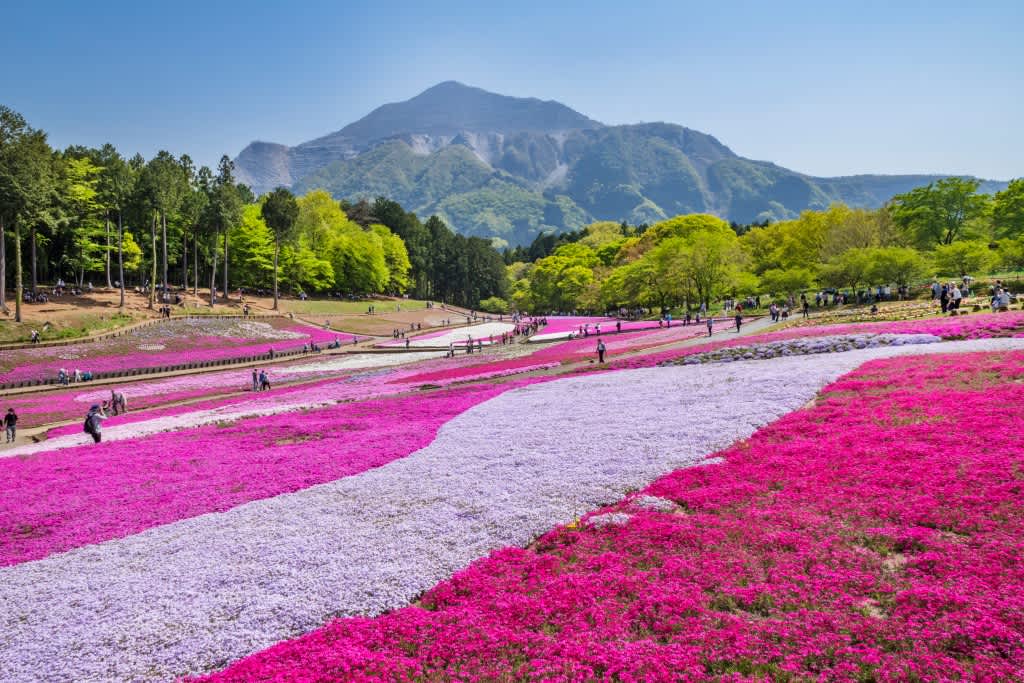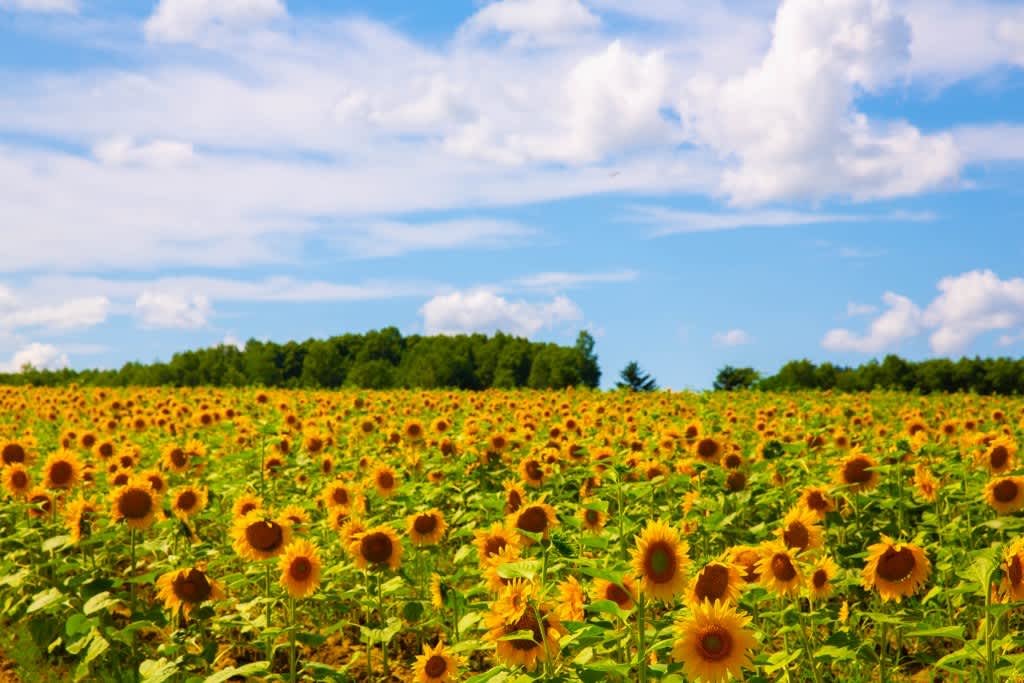A short trip from any major city, in any direction, is a Japan often overlooked. With plenty to see, do and eat, regional Japan is the place to be if you’re looking to avoid the tourist traps and discover the ‘other side’. On your next trip, take a step off the ‘Golden Route’ (Tokyo, Mt Fuji, Kyoto, Osaka and Hiroshima) and start ticking off some of Japan’s best kept secrets on the list below!
1. Shiga Prefecture
Where is it?
Shiga is part of the Kansai region and getting to Otsu, the prefectural capital, is only 10 minutes from Kyoto and 40 mins from Osaka by train on JR lines.
What to do
Sneak up on the Koka Ninja Village! Located in Koka City at the foot of the Suzuka mountain range, here you can check out the ninja dojo and ninja star training hall to learn about their rich history as well as hone your own warrior skills!
What to eat
Funazushi is fermented sushi made with freshwater carp and is one of the earliest forms of sushi and a must for adventurous eaters! Possessing a strong aroma and sharp vinegar taste, funazushi is definitely a ‘hate it or love it’ speciality! Give it a try!
2. Saitama Prefecture
Where is it?
Tokyo’s neighbour to the north, Saitama is located near the heart of Kanto region, and visiting its main transportation hub of Omiya is only a convenient 30 min train ride from Tokyo.
What to do
Hitsujiyama Park (pictured) or ‘Moss Pink Hill’ is covered with thousands upon thousands of shibazakura or moss phlox—vibrant pink and white flowers. Spanning as far as the eye can see, the best time to visit is around late April to early May.
What to eat
Kashiya Yokocho or ‘candy alley’ is a street of around 20 confectionary and snack shops! Nestled in Kawagoe city near the Warehouse district, lovers of all things sweet can delight in cheap candies and snack foods called dagashi, which, traditionally, children purchased with their pocket money.

3. Miyagi Prefecture
Where is it?
Located on the Pacific coast in southern Tohoku, Miyagi Prefecture’s capital, Sendai, is 90 mins north of Tokyo by Tohoku Shinkansen.
What to do
If the deer at Nara Park aren’t quite your thing, how about adorable foxes? Miyagi Zao Fox Village is situated in the mountains of Shiroishi city and is home to over 100 foxes of 6 different species!
What to eat
For lunch, you can’t go past fresh seafood by Matsushima Bay. Try their famous anago (conger eel) or if you’re there in winter, the raw and yaki (grilled) oysters are a must.
4. Hokkaido Prefecture
Where is it?
Hokkaido is the second largest, northernmost island and is connected to the main island of Honshu by a tunnel running under the ocean. You can also take the Hokkaido Shinkansen connecting Aomori on Honshu Island as far as Hokkaido’s southern port of Hakodate. Alternatively, flights from most major cities are available daily, with the major gateway to Hokkaido being Shin-Chitose Airport.
What to do
Being the least developed of Japan’s four main islands, Hokkaido’s unspoilt nature attracts nature-enthusiasts and outdoor adventurers alike. During the winter, hit the slopes at some of the world’s leading snow resorts, or if you’re heading over in summer, check out Hokuryu Town’s Sunflower Garden—the largest in Japan, blessed with over a million sunflowers!
What to eat
If you are a big fan of crab and plan to visit around early September then you’ll be lucky enough to attend the Nemuro Crab Festival held in Nemuro city every year. Enjoy various dishes made using the famous Hanasaki crab and if you happen to miss the festival, head to the Sapporo Central Wholesale Market to get your seafood fix!

5. Iwate Prefecture
Where is it?
This large prefecture is on the Pacific coast in northern Tohoku and is 130 mins from Tokyo by Shinkansen to the prefectural capital of Morioka, or 80 mins from Osaka via plane to Hanamaki Airport.
What to do
Ryusendo Cave is one of the three largest limestone caverns in Japan, featuring expansive subterranean galleries arching over clear blue lakes, with some being illuminated in brilliant colours from submerged lighting.
What to eat
That depends. How hungry are you? At a Wanko soba restaurant in Morioka, you will be continuously served small bowls containing mouthful sized portions of noodles. Your empty bowls are stacked up next to you, and every time you finish each round, it’s replaced with another. How do you think you’ll stack up?
6. Gifu Prefecture
Where is it?
Gifu is a landlocked prefecture right at the heart of Japan. Gifu’s charming town of Takayama is 2.5 hours by JR Limited Express from the city of Nagoya, which is a convenient 55 mins from Osaka or 100 mins from Tokyo via the Tokaido Shinkansen.
What to do
The Forest of the Seven Lucky Gods in Takayama consists of seven huge Shinto gods carved from ancient Japanese trees. The holy septet are important figures in Japanese mythology. A 10 min bus ride from Takayama train station, the awe-inspiring surrounds provide an experience that borders on the transcendental.
What to eat
Hida Beef has been consistently voted the best beef in Japan along with the more commonly known Kobe and Matsusaka. Famed for its quality marbling, this tender treat is commonly served as is, or in a burger or delicious sukiyaki.

7. Akita Prefecture
Where is it?
The mountainous prefecture of Akita is located in northern Tohoku and is easily accessible via the Akita Shinkansen. A one-way journey takes just under 4 hours.
What to do
Take a trip back in time to the days of the samurai in the town of Kakunodate! The samurai district has multiple museums and restaurants and boasts one of the best examples of samurai architecture and housing in the country.
What to eat
Kiritanpo is a local cuisine originating in Akita Prefecture. Freshly cooked rice is pounded, wrapped around skewers, and then grilled. Kiritanpo nabe, where kiritanpo is put in a hotpot, and misotanpo, where sweet miso paste is spread over the rice, are both famous dishes.
8. Mie Prefecture
Where is it?
Part of the Tokai region, Mie Prefecture is only a short hop from major hubs like Osaka, Kyoto and Nagoya on both JR and the Kinetsu Line.
What to do
Fall in love with Akame Shijuhachi Taki (pictured) or Akame 48 Waterfalls—a 4 km long path along the river that offers a refreshing walk in the forests with, as the name suggests, more than 48 spectacular waterfalls!
What to eat
Oysters are prized gems of the sea in Japan, and Matoya Bay in the city of Shima, is home to the Matoya Oyster. Best between November and March, the Matoya oyster is a world-class oyster adored by discerning gourmets.

9. Tottori Prefecture
Where is it?
Located along the Sea of Japan coast in the Chugoku region, Tottori Prefecture is accessible via Tottori Sakyu Conan Airport and JR Tottori train station.
What to do
Ever wanted to ride a camel … in Japan? You can in Tottori Prefecture! Hop on and venture out into the largest sand dunes in Japan that span over 16 km along the coast and reach up to 40m tall!
What to eat
Famous for its nashi pears, pick up a cone of pear ice cream—perfect after a long hot days camel ride.
10. Kagoshima Prefecture
Where is it?
Located on the southernmost tip of the island of Kyushu, Kagoshima is at the end of the line of Japan’s extensive bullet train network, 90 mins from Hakata (Fukuoka). If you don’t enjoy long train trips, there are daily flights to and from almost all major airports.
What to do
Take a ‘sand bath’ (pictured) in the small seaside town of Ibusuki. A what bath? Set up on a sandy beach, the sand bath involves being ‘buried’ in volcanic sand warmed by geothermal activity, and is believed to cleanse your body of toxins and impurities.
What to eat
Have you ever tried turtle hands? Don’t worry, it’s not what you think it is! A Japanese barnacle, kamenote literally means “turtle hands” and has a fleshy texture comparable to crab. This delicacy can be found at most local restaurants on the island of Yakushima.




















































